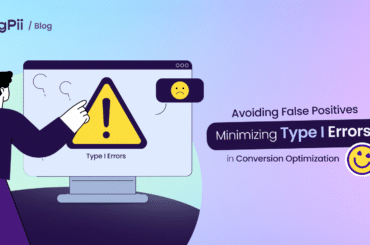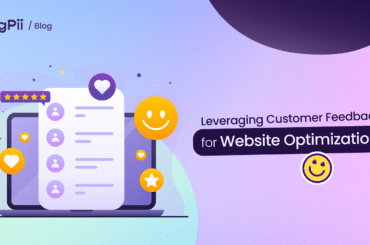I want to ask you a question, who’s your customer?
I’m sure that you’ve given me your ICP or BP by now and that’s all good and such.
But have you thought about your customers lately? And I don’t mean increasing your revenue by bringing more users, no.
I mean knowing what your customers want and being user-focused.
Now you might be asking, I’m user-focused, but what does that mean?
And why being user-focused is all that important? Well…
In layman terms, it means that you need to keep your customer in the center of everything you’ll do.
That means that every feature, marketing campaign, and update need to revolve around your customers.
As for why? Well, that’s the simplest and shortest way to success you see.
Having your users at the heart of your operations not only moves you forward, but it moves your users closer thus making them loyal ambassadors.
What are user-focused insights?

User-focused insights are the information gathered from your website that focuses on fulfilling customer needs and wants.
It includes things like how users arrive on your website, what features they use the most if they understand how to navigate it, etc.
Here’s a shortlist of where you can get top user-focused insights:
● Web Analytics – This code tracks every bit of information about your web traffic, including where users come from, where they go on your site, which links they click, etc.
● User feedback – You can gather valuable insights by simply asking for them! Survey forms and questionnaires are a great way to get in-depth information about how people feel about your website.
● User testing – If you want in-depth and personal information about users’ interactions with your website, watching them in person is the best way to do it.
Now that we understand what user-focused insights are and where we can get them from, let’s talk about data!
How can you use your data?
The most important thing you need to keep in mind is these four things:
- Your users.
- Your business.
- Your goals.
- What success means for your company.
Need to be balanced.
When they’re all equal, you’ll have the best possible results when deciding what changes you should make on your website.
Try to figure out what the pain points are from each perspective, so for example, for users, these might be:
● I can’t find what I’m looking for
For business, these might be:
● I’m not making enough money off this site because people just aren’t coming back.
● My bounce rate is through the roof! What do we do?
We need a way to get more traffic and keep them longer! Our revenue depends on it!
And lastly, your goals may look like this:
● Increase revenue by 30% in 2023.
● Allow users to complete their goals in 30 seconds or less.
Now that you know what information is out there, how do you get it?
Here are a couple of ways:
Web Analytics and user feedback.
These are all the direct ways users talk to you about your website.
You can get user feedback by directly asking them or looking at different forms of analytics like heatmaps and scroll maps. You can do both using FigPii.
This will tell you where people spend their internet time on your site, so you know if they’re seeing what they need to see or not.
Heatmap tools are great because they show exactly how much attention each part of your page gets.
An example of one would be FigPii.
Scroll maps are just as simple to use, but instead, it tells how far down people go on your page.
All you have to do is add a snippet of code into the HTML of your page, and it’ll do the work for you.
Then comes user testing:
This is the easiest way to get rid of “I dunno” for good.
If you’re not sure what exactly to test, ask yourself this question: “What does my customer want/need?”.
Then find out how they go about trying to get that.
Once you’ve figured out what kind of insights you want to gather, choose one or more tools above to help your research!
Remember, these are only suggestions; if something else works better for you, use it instead.
*Remember* The best tool in this process is YOU. After all, you’re the one who knows what’s best for your company.
How To Gather User-Focused Insights From Your Website.

If you want to gather user-focused insights from your website, you need to study your web traffic, look at user feedback and surveys, and analyze how users interact with your website.
By understanding what users want and need from your website, you can make changes that will improve their overall experience and help you achieve your business goals.
You can gather user-focused insights through web analytics, direct user feedback, and user testing.
First, you need to go into Google Analytics or a similar platform and find the tools that allow you to see things like unique visitors, site speed load time, bounce rate, ad revenue per visitor, etc.
Then you need to look more specifically at where users are coming from, what pages they’re landing on most frequently, what time of day they’re coming from, how long they stay on different pages, why they come back or don’t come back, and what search words they use to find your site.
You can also gather user-focused insights from direct user feedback.
Also, you can ask users directly via email or on social media, or you could set up a form with FigPii that collects all of the feedback in one place.
Next, look at heat maps and scroll maps for any areas that might need fixing.
Moreover, look at how long people stay on different pages to gauge interest levels.
Finally, make sure to analyze how users interact with your website by using these tools:
- Click maps.
- Surveys.
- Session recordings.
Once you find out where users click the most, where they spend the most time, and what gets them to come back, it’s up to you to use that information in a way that fulfills your business goals.



